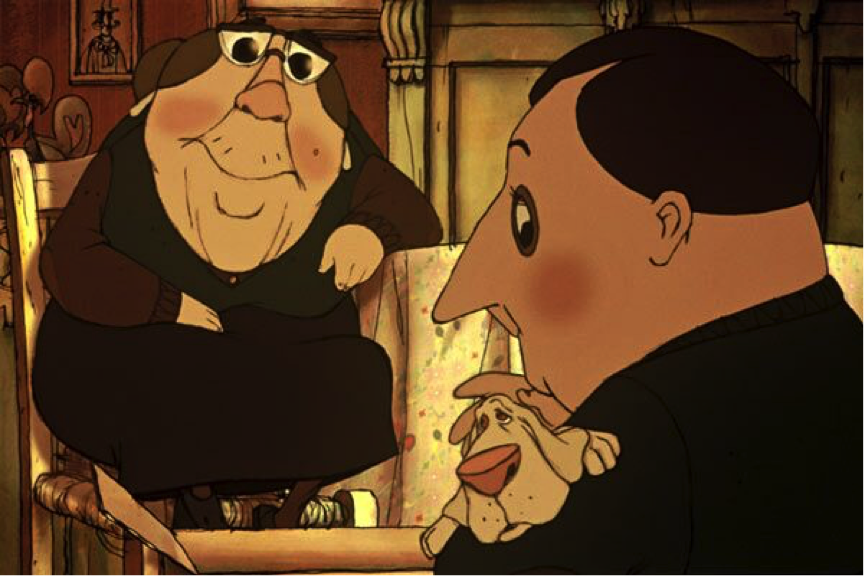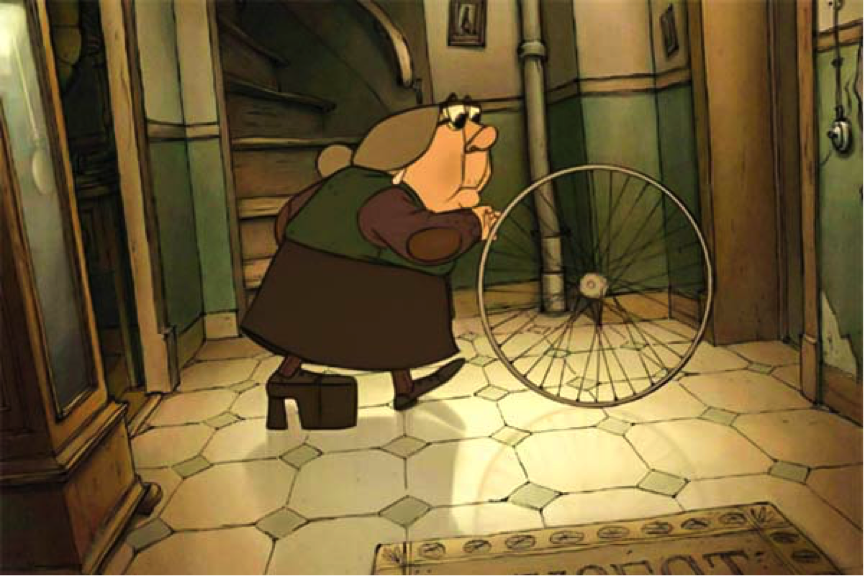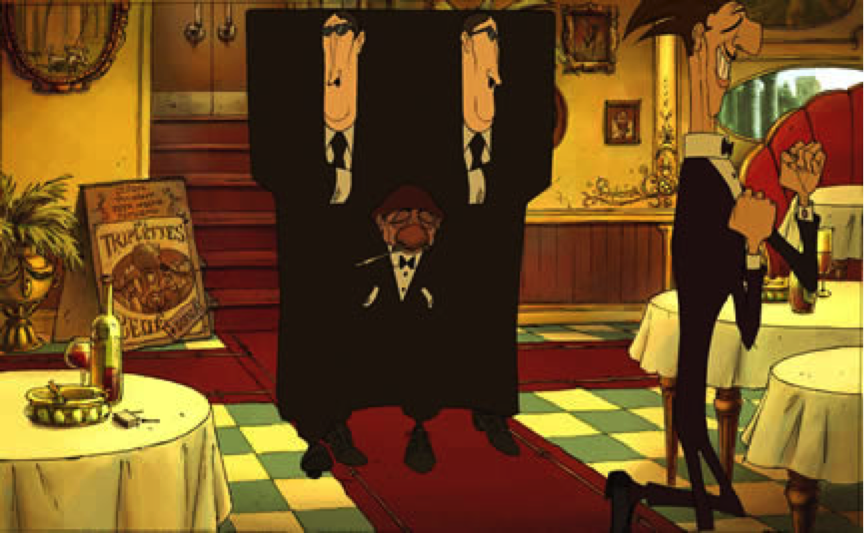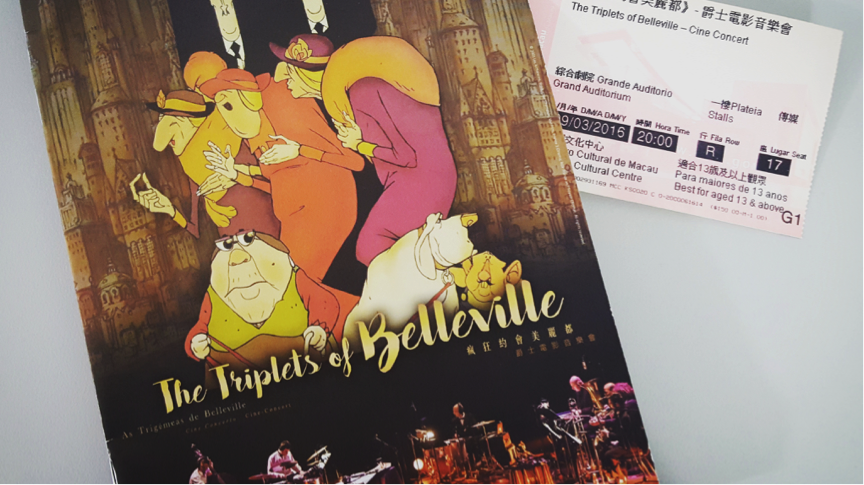I still remember vividly the first time I watched Les Triplettes de Belleville. More than a decade ago, in 2003, this fantastic animation film directed by Sylvain Chomet was being screened in a small movie theatre with red velvet seats in Aveiro, Portugal. Or maybe it was in the 1930’s – the saxophones and percussion and the way my hips couldn’t stop dancing in my seat got me a bit confused. Right then, I was hooked. Yesterday, I went back to that place.
The Triplets of Belleville focuses on Madame Souza, a small, Portuguese elderly woman raising her young grandson Champion, after his bicyclists parents died.
From the beginning of the film, we are embraced by Souza’s endearing love for her grandson, in the ways she tries to find anything that can make him happy – from trying to interest him in piano, to getting him his dog Bruno.

Finally, she buys him a tricycle – and just as his late parents, he shows a special talent for road cycling.
As years pass, Champion becomes a professional cyclist with the very resourceful Mme Souza as his coach: always right beside him, blowing her whistle to mark the compass as he rides, relaxing his muscles with the vacuum cleaner, the lawn mower and the hand whisk.

Eventually, he enters the Tour de France. During the race, he and two other riders are kidnapped and brought across the ocean to Belleville by French mafia henchmen.
Mme Souza and Bruno follow the men to Belleville, incessantly crossing the ocean in a pedal boat, but soon lose their trail. Lost and penniless, trying to find Champion, Souza has a chance encounter with the renowned Belleville triplets, 3 elderly women turned improvisational musicians who used to be music hall singers from the 1930s. The sisters take Souza to their home and despite their cultural and gastronomic differences she becomes a part of their group.
As the Triplets and Souza perform a jam session at a restaurant – using a newspaper, a refrigerator, a vacuum cleaner and a bicycle wheel as instruments – the mafia boss who kidnapped her grandson happens to be in the same place.

When Mme Souza realizes it’s him, she follows the Mafia’s “suits” the next day and discovers their plan to drug the cyclists and build a stationary cycling machine for gambling on the racers. That night, as several mob bosses arrive at the mafia hideout and place their bets on the riders, Mme Souza, Bruno and the triplets intrude in the hideout and unbolt the machine from the ground, turning it into a pedal-powered vehicle on which they all escape.
Right from the beginning of the Triplets of Belleville we realize how Mme Souza has superhuman strength and resourcefulness, becoming a close-to-heart superhero. The animations are descriptive of the mood in line, either vivid and warm or meagre and cold.
But most of all – the soundtrack of the Triplets of Belleville is what took the world by storm. Composed by Benôit Charest, it earned him many awards, including a César for best Film Music and an Oscar nomination.The Macau Cultural Centre was the stage for the adventure to roll once again – this time from the hands of the Terrible orchestra de Belleville, a cine-concert in which an 8-piece band, including Benoit, play in-sync the soundtrack to the movie.
Benoit conducts and plays the guitar; and between the band’s keyboard, percussion, bass, drums, saxophone, trumpet and trombone, they also clap, snap, step and jump, swinging the audience further into the universe of Belleville.
What a wonderful rendezvous, Mémé.


































